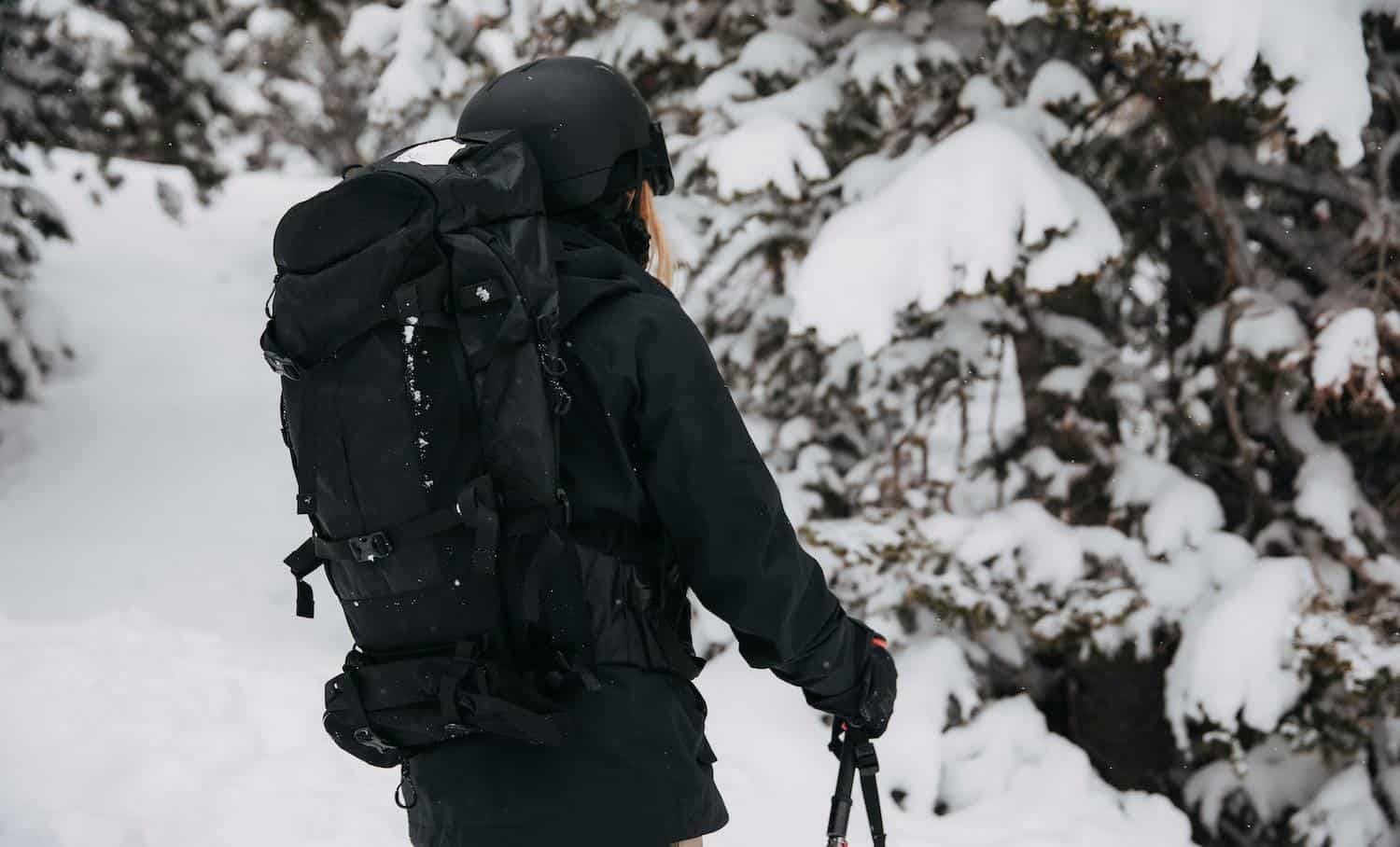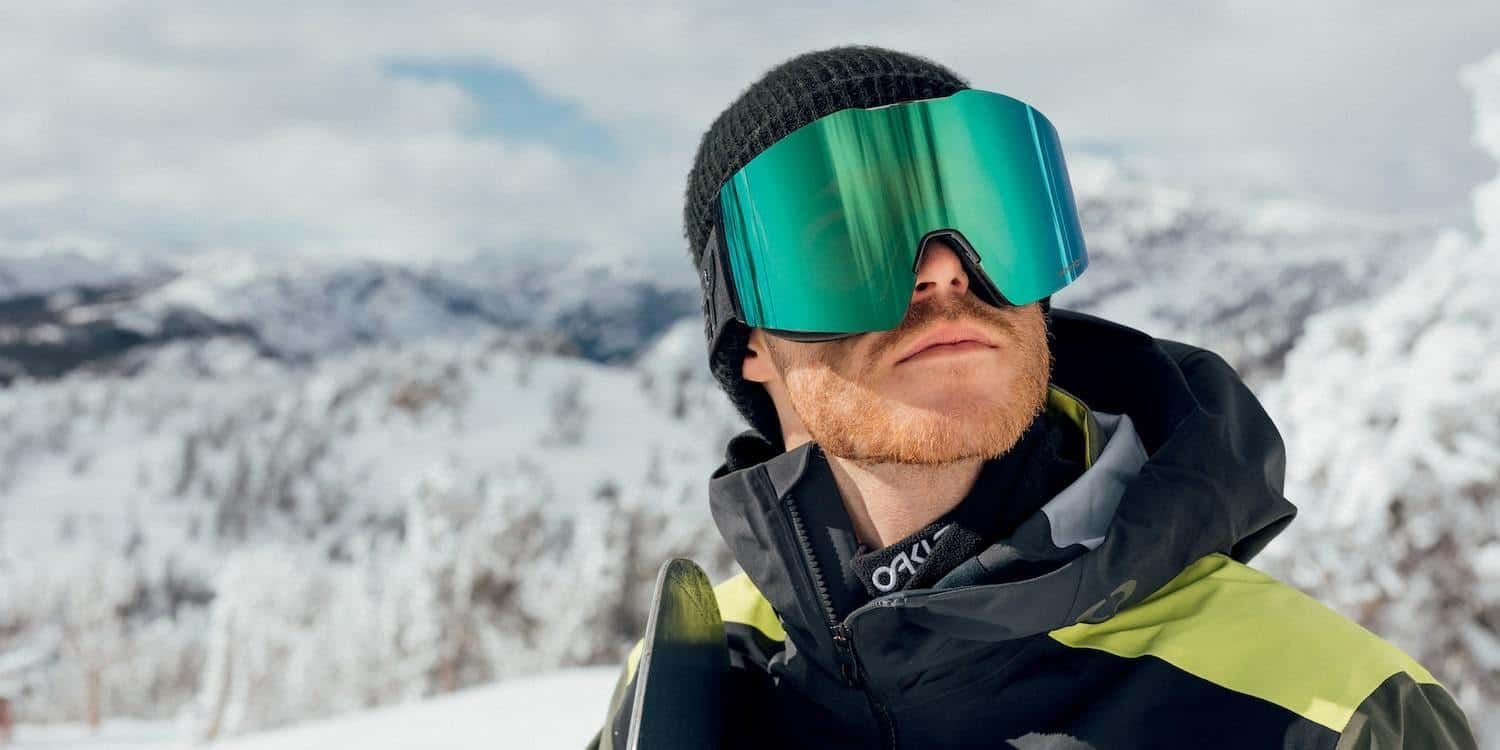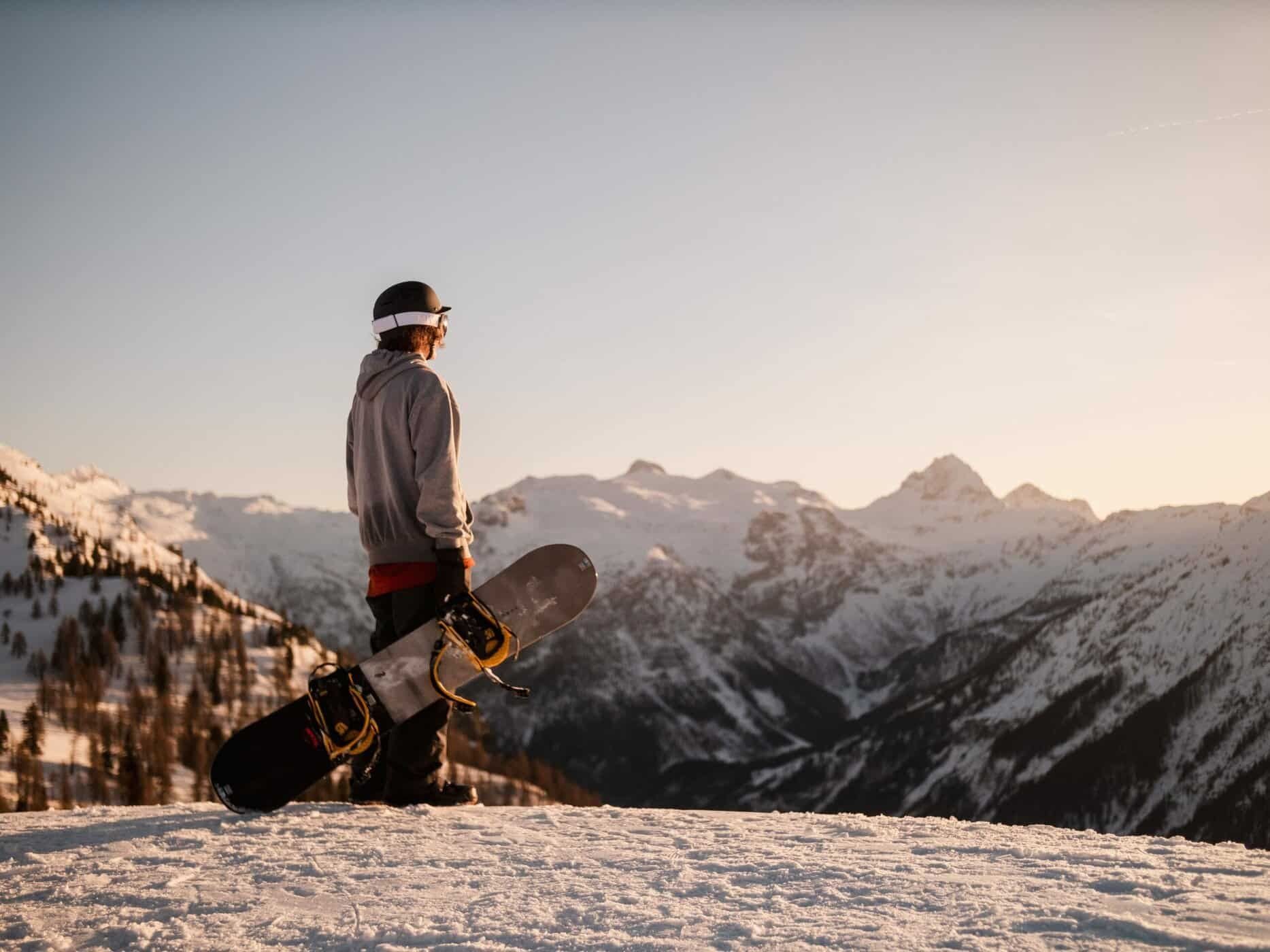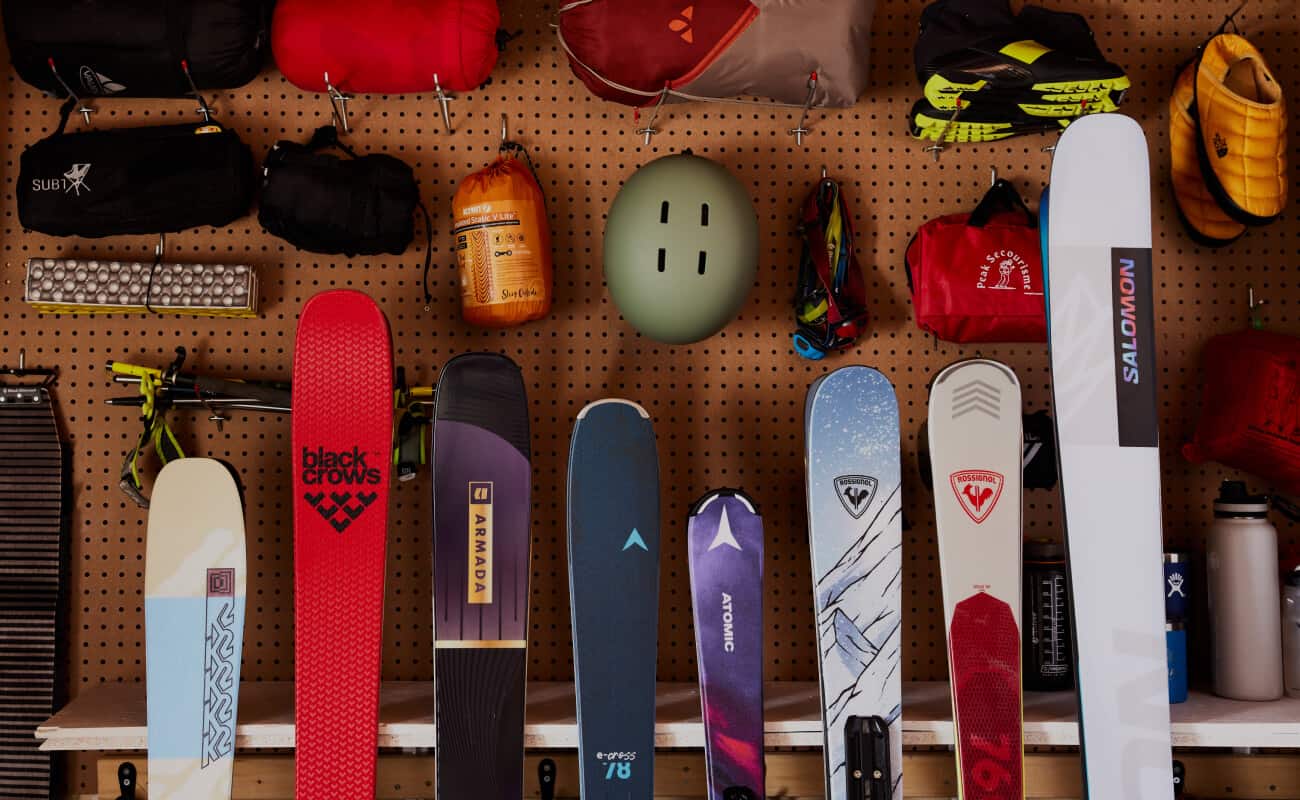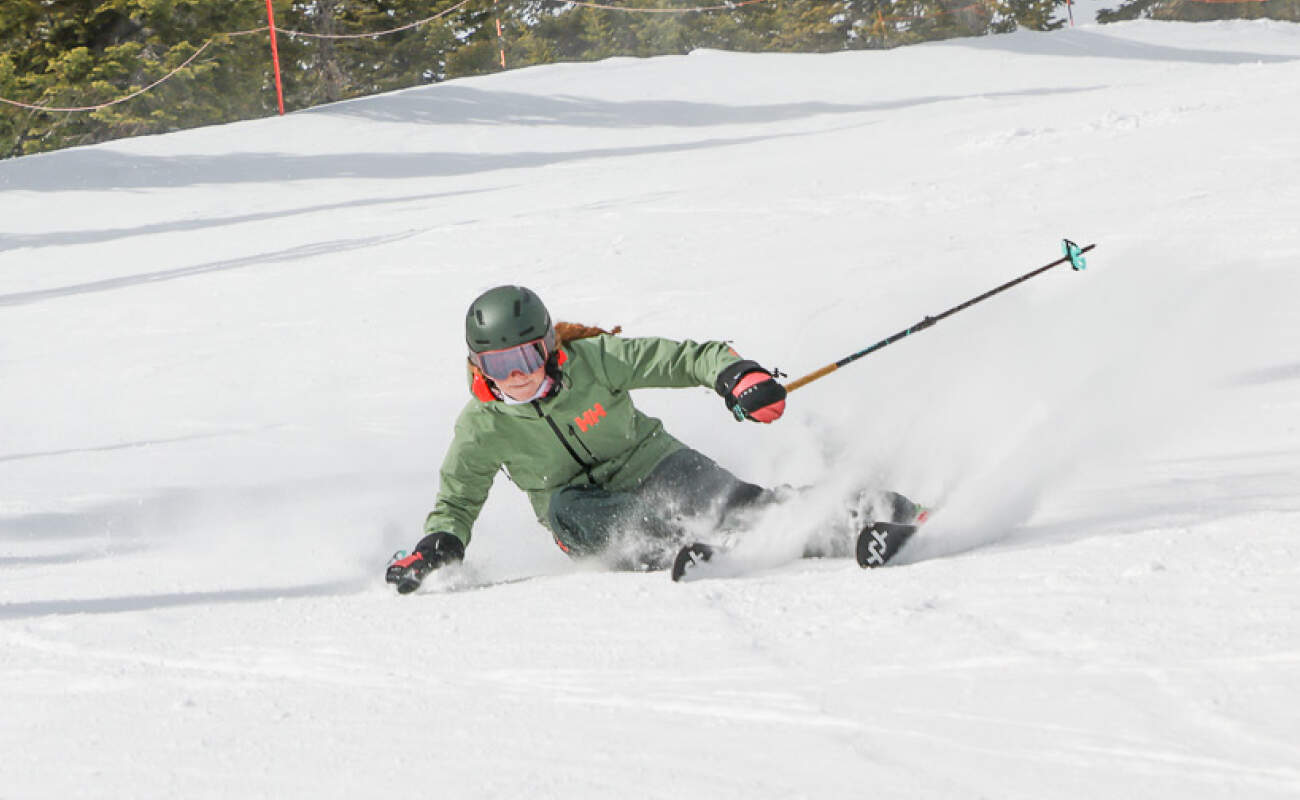However, a good choice will last for years. Ski poles assist with rhythm development, turn shape, speed control and terrain park exploration, making them a very useful part of your skiing toolkit.
What used to be seen as a simple add-on to your skiing equipment is now highly specialized. This means you can find a set of the best ski poles for your unique skiing journey, whether that’s at the resort, on the cross-country track or deep in the wilderness. Read on to discover the seven best ski poles of 2022-23.
Best Overall: Atomic AMT SQS Ski Poles
The Atomic AMT SQS ski poles are good in almost any situation. You can take them into the resort or backcountry, and they’re adjustable for ease of use. Boasting a lightweight construction and durable design, these ski poles will get you through the ski season with ease.
- Price: $59-99 for adults depending on the model. $30 for kids.
- Adjustable: No
- Good for: Resorts, Backcountry, Sidecountry
Altitude-Sports also has a wide variety of ski pole options to choose from. Including:
Best Resort Ski Poles: Head Kore Ski Pole
These aluminum poles are durable and feature an easily adjustable power strap and steel tip for added grip. They can hang with both casual skiers and hard-chargers through a variety of conditions.
- Price: $99
- Adjustable: No
- Good for: Resort skiing
Price: 0.00$
Brand Name | Product Type
Best Backcountry Ski Poles: Black Diamond Traverse Pro
Black Diamond is already a mainstay in the backcountry ski department, and the Traverse Pro continues this tradition. These highly adjustable, lightweight ski poles feature an intuitive grip and breakaway straps. They also come with powder baskets for deep days in the wilderness.
- Price: $165
- Adjustable: Yes
- Good for: Backcountry/Touring
Price: 0.00$
Brand Name | Product Type
Best Ski Poles for Budget: Salomon X North Poles
Ski poles have gotten more capable but also more expensive, which makes the Salomon X North Poles such an attractive find. They feature a clean design, lightweight construction and only cost $35. If you don’t need anything fancier than a basic set of ski poles, these are a great option.
- Price: $35
- Adjustable: No
- Good for: Resorts, Sidecountry
Price: 0.00$
Brand Name | Product Type
Best Adjustable Ski Poles: Armada AK Adjustable Ski Poles
These fully adjustable poles are an excellent choice for anyone dabbling in both resort and backcountry skiing. They’re lightweight, easy to operate and ready to accompany you on all future adventures.
- Price: $140
- Adjustable: Yes
- Good for: Resorts, Backcountry, Sidecountry
Price: 0.00$
Brand Name | Product Type
Best Ski Poles for Kids: Salomon Kaloo Ski Poles
If you want your kids to get out and enjoy the snow early in life, get them a pair of these aluminum poles. They’re priced well, durable and lightweight, perfectly suited to help your kid progress in their ski journey.
- Price: $30
- Adjustable: No
- Good for: Resort skiing
Price: 0.00$
Brand Name | Product Type
Best Cross-Country/Nordic: Leki Spin Shark SL Ski Poles
Leki has created an excellent, adjustable cross-country ski pole in the Spin Shark SL. These poles will be able to support your classic nordic and skate ski endeavors while remaining light and durable.
- Price: $149
- Adjustable: Yes
- Good for: Cross-country/nordic skiing
Price: 0.00$
Brand Name | Product Type
How to Choose Ski Poles
Like most ski equipment, there are aspects to consider before deciding on the best ski poles. Make sure to review the points below so you can find the perfect set of ski poles.
Pole Length
A ski pole that’s too long will impact the ground before you’re ready, leading to awkward pole touches and busted ski rhythm. A ski pole that’s too short will force you to adjust your body position to be able to make a pole touch. Length is the first and arguably most important ski pole metric.
The ideal pole length can be obtained by grabbing a ski pole and flipping it upside down. With your arm bent at roughly a 90-degree angle, see if you can grab the ski pole just below the basket. If you can, while keeping your arm bent at around 90 degrees, it’s within range.
Poles specifically for deep powder should come with powder baskets and can be a little shorter to help you maintain a fluid pole-touching motion. For terrain park skiers, the ski length can be even shorter, which helps maintain motion over obstacles and prevents your poles from dragging when you ski switch.
Fixed vs. Adjustable Poles
If you’re not growing anymore and you know what your height and ski pole preferences are, a fixed ski pole is fine. In fact, many fixed poles are often cheaper than adjustable ones.
Adjustable ski poles have a lot of benefits for people still growing, as you can easily adjust the size. It’s also nice to purchase because ski pole length, while pegged to conversion charts, ultimately depends on your comfort. It’s nice to have a piece of equipment you can adjust to find the perfect feeling for you, which may not be obvious right away.
The downsides to adjustable ski poles are their pricing and locking mechanism. Eventually, and that could be years down the road, the locking mechanism will either need to be tightened or will fail. An adjustable ski pole that won’t adjust or hold position means you’ll have to buy another one.
Construction, Materials, Weight, etc.
Aluminum is used in a lot of ski poles and is generally seen as a cost-saving option. Higher-end performance ski poles use carbon fiber. Carbon fiber poles create a lighter more durable ski pole but at a much higher price. Ultimately, how often and where you use the ski poles will matter.
For downhill resort-focused skiers, a simple aluminum pole will work 99% of the time. For dedicated backcountry skiers, carbon fiber poles mean more durability on longer touring expeditions. Compare prices, construction and implied durability before settling on a choice.
Wristband System
Pole straps are there for a reason. If you plant a pole and it gets stuck, the ski pole stays put while you keep skiing. This leads to, at best, an annoying reclimb to grab the ski pole. Using a wristband system helps keep your ski poles close and minimizes a ton of extra effort.
Baskets
Baskets are the attachments at the bottom of a ski pole. For hard-packed snow and groomers, you want smaller baskets. Extra wide baskets are ideal for deep, soft powder. Without the baskets, the ski pole would sink right through the snow. Baskets help keep pole touches consistent, which in turn helps you maintain rhythm.
FAQ
Q: Do you need different poles for backcountry skiing?
A: It doesn’t hurt to have a dedicated set for backcountry skiing, but it's not required. If you’re dabbling in both resort and backcountry skiing, a good option is to get an adjustable ski pole.
Adjustable poles are great because you can lengthen them for touring and shorten them based on conditions when you ski your line. Fixed ski poles are best for resorts when you know exactly what size feels best for you.
Q: Can you use trekking poles for backcountry skiing?
A: Yes, although you need to make sure of a few things. The trekking pole should be highly adjustable and should come with wide powder baskets. If you can’t find the wider baskets, they won’t offer much support in soft backcountry snow.
Q: Is Leki a good ski brand?
A: Yes. Leki has made many excellent ski poles, including ski poles for downhill, backcountry and cross-country skiers.
Conclusion
Finding the best ski poles doesn’t have to be a frustrating experience. For the overall best ski poles, check out the Atomic AMT SQS ski poles. Backcountry skiers will enjoy the Black Diamond Traverse pro, and budget shoppers will find plenty to love with the Salomon X North Poles. Gear up with the best selections around to get the most out of your winter.


